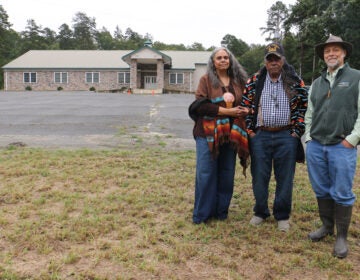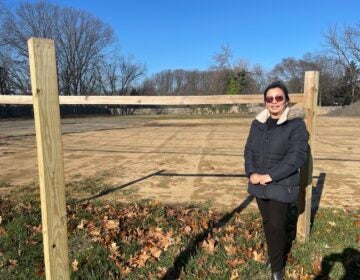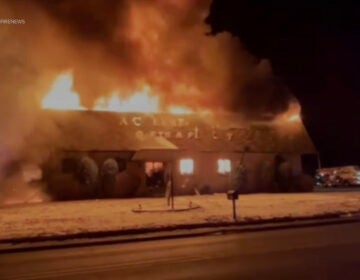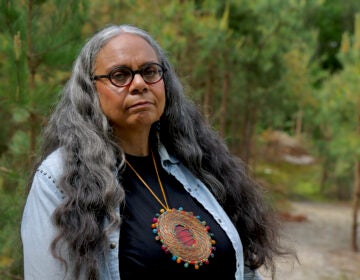Despite being sacred ground, Quinton Township says Native American sanctuary needs a new permit to worship
Cohanzick Longhouse Sanctuary wants to continue using the property as a worship site. But Quinton Township says they need to reapply.
Listen 2:22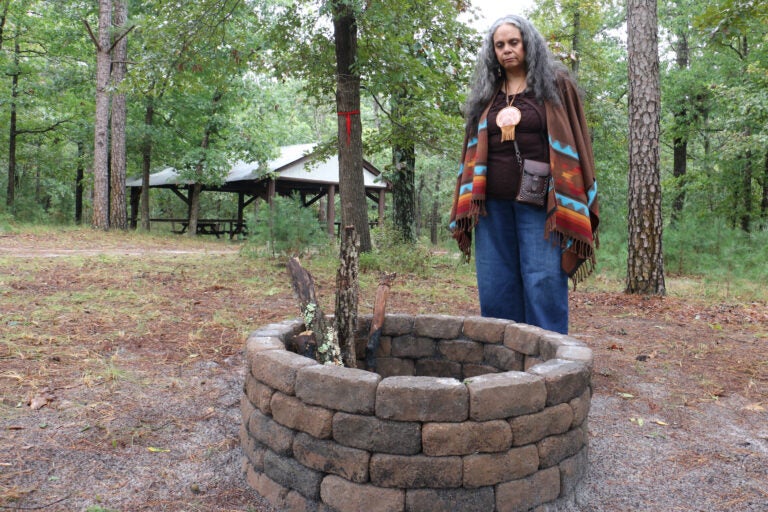
Tyrese Gould Jacinto built a fire circle at a location where she ''felt the energy'' of her ancestors. (Emma Lee/WHYY)
From Camden and Cherry Hill to Trenton and the Jersey Shore, what about life in New Jersey do you want WHYY News to cover? Let us know.
In Quinton Township, New Jersey, a Native American stewardship apprenticeship program — one of the first in the nation — is slowly taking shape.
Tyrese Gould Jacinto, president and CEO of the Native American Advancement Corporation, has spent several months preparing the Cohanzick Longhouse Sanctuary for a public opening.
The sanctuary is located in a former church building and aspires to offer in the physical space spiritual practices listed on the website.
“Of course, we’ve been doing that for many years now, but just without a physical building,” Jacinto said.
But township officials have yet to approve the continued use of the property as a place of worship.

The sanctuary property was once a Christian church property
Jacinto reclaimed her family’s ancestral land in 2023 with financial support from the New Jersey Conservation Foundation, The Nature Conservancy, and the state’s Green Acres program. The property includes a church building which was built in 2011, after the original edifice burned down.
The continued use of the property as a religious site should be similar to when the property changed hands between two Christian churches in the last couple of decades, according to Jacinto.
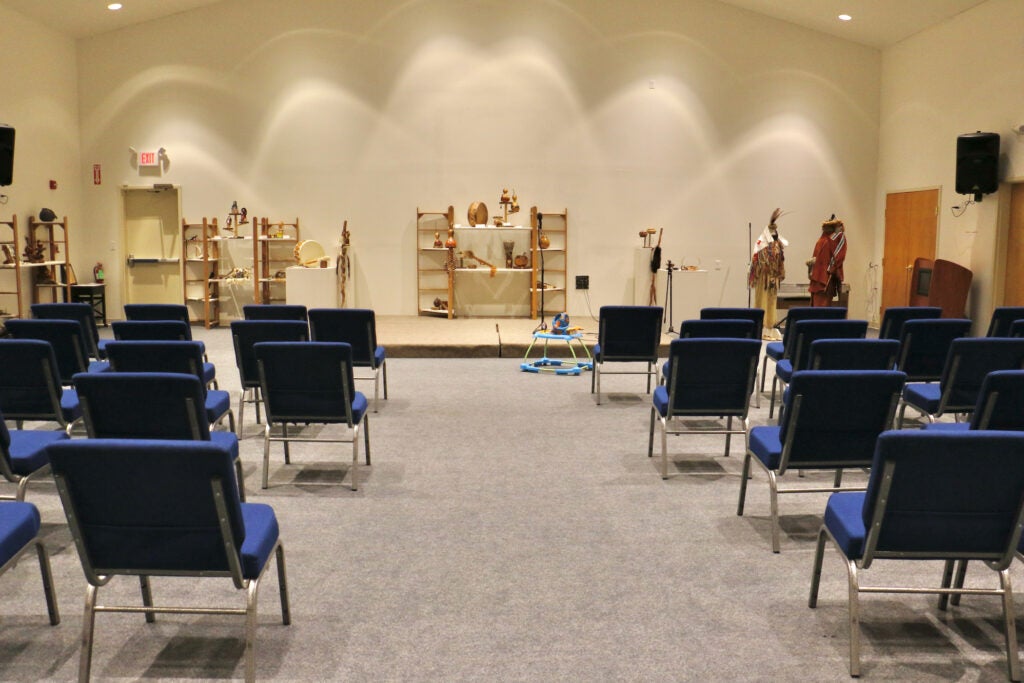
But township officials said Jacinto’s group should apply for a conditional use permit. That forces the sanctuary to start at the beginning of the zoning process, according to Heather Kumer, an attorney with Watershed Legal Group who’s representing the sanctuary.
“It means that we would have to get everything from scratch approved again, like the building was never built,” she explained, adding that the sanctuary would have to submit land surveys and site plans. “It costs a lot of time and money to get that in order.”
The sanctuary plans on using the property as is.
“There’s nothing changing on the property,” said Kumer. “Everything is staying the exact same.”
Kumer said there was a similar dispute in North Jersey.
In 2019, the Ramapough Lenape Nation and Mahwah Township settled years of litigation over the use of their 14-acre land as a prayer site.
The tribe filed a federal lawsuit against the township and the homeowners association of the adjacent Ramapo Hunt & Polo Club housing development after it received fines for what the township deemed unauthorized use of its land, which was gifted to the tribe by the developer.
Residents of the development sued separately to undo the settlement, but the suit was tossed.
Kumer and Jacinto are open to speaking with township officials and are hoping that everything can be resolved outside of a formal hearing.
“We know that things can get dirty…and we don’t want that,” Kumer said. “They should give us a meeting so that we can let them know that we are in the same non-conforming use that’s indefinite.”’
‘It is a failure to understand how Indigenous ceremonial ways work’
Dr. Mark Clatterbuck, co-director of the Native American & Indigenous Studies program at Montclair State University, said clashes between government and Native Americans practicing their spirituality “happens pretty regularly” at all levels of government.
“There’s a real failure to protect Indigenous religious practice and ceremonial ways [and] spiritual ways,” said Clatterbuck, who focuses on Native American religion and works with Indigenous communities engaged in environmental justice work. “I think there’s a real lack of understanding at best, and in some cases a direct assault at worst.”
One of the high profile cases he cited was the Standing Rock Sioux Tribe challenging the Dakota Access Pipeline.
Clatterbuck said he was in court when the Standing Rock tribal chairman was explaining to the judge the spiritual significance of their case.
“A federal judge openly mocked the chair,” he said. “There was just a complete lack of respect that Indigenous peoples’ relationship to their land is fundamentally a spiritual matter.”
A new environmental review of the project is expected to be complete in late 2024.
Clatterbuck believes the situation involving the Cohanzick sanctuary is a continuation of officials failing to “understand how Indigenous ceremonial ways work.”
“The property can be passed from church to church without problem. But suddenly when it’s an Indigenous community…there’s a problem,” he said. “I think it does demonstrate the privileged place that Christianity has in our legal system.”
‘Ready to share this with the world’
Jacinto has not advertised the sanctuary, but it has generated interest from people who want to visit.
“I’m getting comments from all across the country,” said Jacinto. “People that want to come back and visit where their ancestors are from. And we’re ready to share this with the world.”
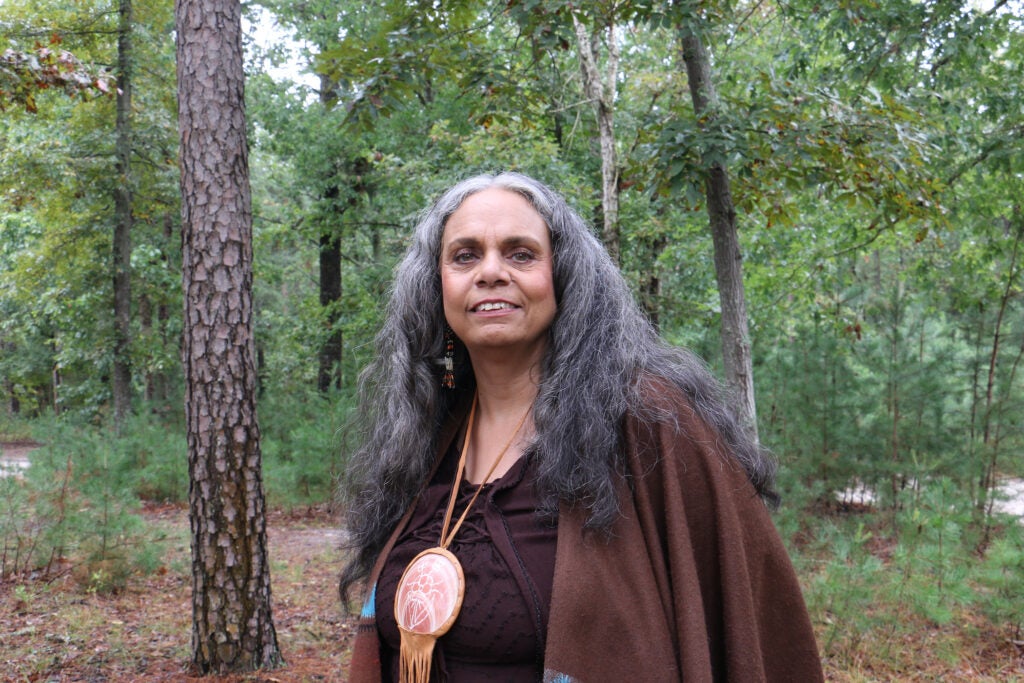
She said the “main” frustration is turning potential visitors away from the sanctuary, adding they are ready to share their culture to help people be better land stewards.
“We’re ready to help with the economy. We’re ready to help with jobs as well as teaching our spiritual ways,” said Jacinto. “It’s really sad that we cannot let others see what we have to offer.”
She adds that nature and religion are one in the same for Native Americans.

Get daily updates from WHYY News!
WHYY is your source for fact-based, in-depth journalism and information. As a nonprofit organization, we rely on financial support from readers like you. Please give today.



